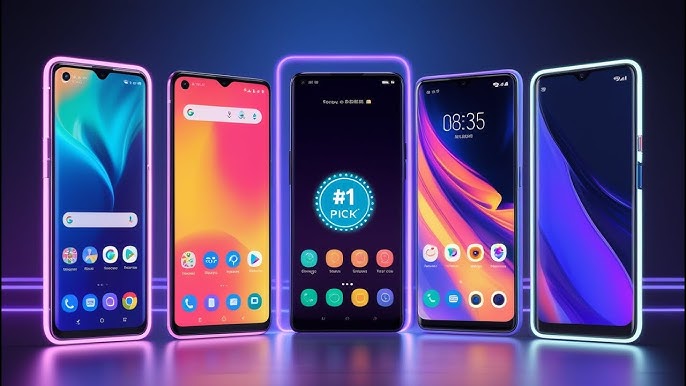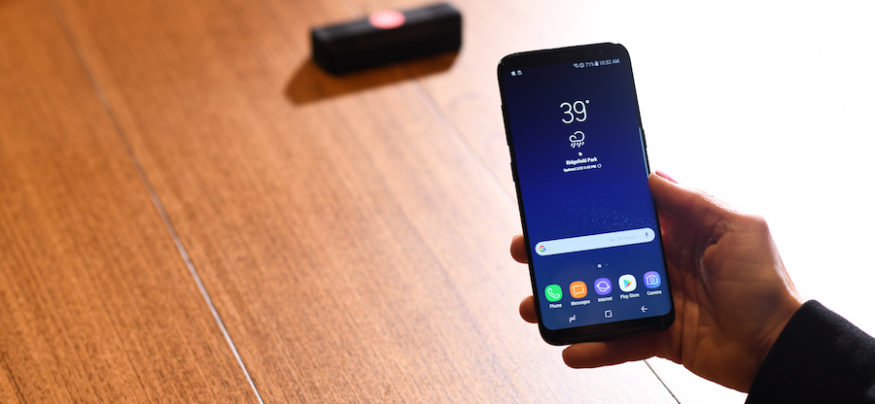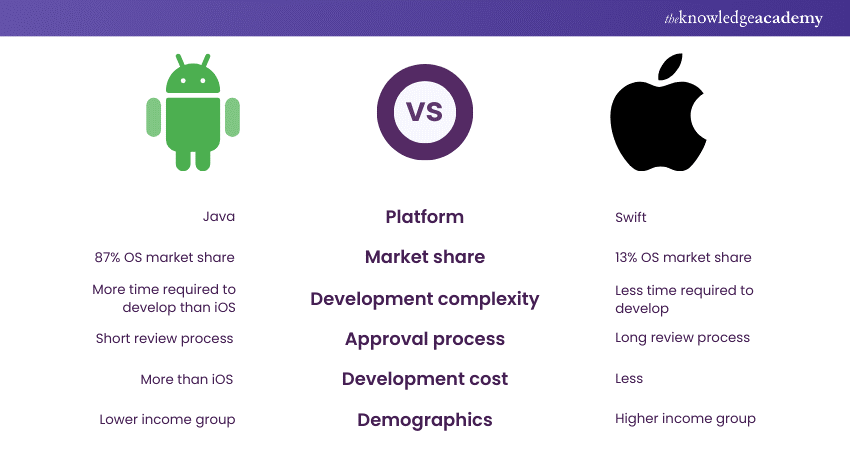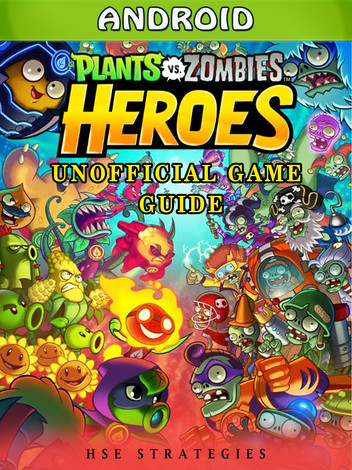
The Ultimate Android vs. iOS Showdown: Why the Ecosystem Matters More Than Ever
The Android vs. iOS debate is as old as the modern smartphone itself. For years, it has been framed as a simple binary choice: customization versus simplicity, open versus closed. But in today’s hyper-connected world, this classic rivalry has evolved. It’s no longer just about the operating system on your phone; it’s about the entire universe of devices, software, and services you inhabit. The decision you make impacts your watch, your headphones, your home, and your digital life in profound ways. This article moves beyond the surface-level talking points to deliver a comprehensive feature comparison for the modern user, viewed through the lens of the vibrant and ever-changing world of Android News, the sheer variety of Android Phones, and the exciting, diverse landscape of Android Gadgets. We’ll explore the core philosophies, the hardware ecosystems, and the real-world software experiences to help you understand which digital nation you truly belong to.
The Philosophical Divide: Freedom of Choice vs. Curated Simplicity
At its heart, the difference between Android and iOS is a philosophical one. It’s a clash between an open platform that champions choice and a closed ecosystem that prioritizes a seamless, controlled experience. Understanding this fundamental difference is the key to appreciating why each platform operates the way it does.
Android’s Open Ecosystem: A World of Possibilities
Android, by its very nature, is built on the principle of openness. For the end-user, this translates directly into unparalleled choice. When you decide to buy an Android phone, you aren’t just choosing one device; you’re choosing from hundreds of models across dozens of manufacturers. From the bleeding-edge innovation of a Samsung Galaxy Z Fold to the pure software experience of a Google Pixel, or the unique design flair of a Nothing Phone, the hardware variety is immense. This constant stream of innovation is what makes following Android News so exciting.
This freedom extends deep into the software. Don’t like the default messaging app? Change it. Want a home screen that looks completely different? Install a third-party launcher like Nova or Action Launcher and customize every icon, widget, and gesture. This ability to tailor a device to your exact workflow is Android’s superpower. The recent pressure on Apple in the EU to allow third-party app stores and sideloading is a testament to the appeal of the open model that Android has championed from day one.
Apple’s Walled Garden: A Seamless, Controlled Experience
Apple takes the opposite approach. It builds the hardware, designs the software, and curates the app ecosystem. This “walled garden” approach has its own powerful advantages. The integration between an iPhone, an Apple Watch, AirPods, and a MacBook is undeniably seamless. Features like Handoff, where you can start an email on your phone and finish it on your laptop, or Universal Clipboard, which lets you copy text on one device and paste it on another, “just work” with zero setup. This cohesion creates a powerful, frictionless user experience.
The trade-off, of course, is a lack of choice. You use Apple’s hardware with Apple’s software in the way Apple intended. Customization is limited to changing your wallpaper and rearranging icons on a grid. While this simplicity appeals to many, it can feel restrictive to those who want more control over their digital environment.
Real-World Scenario: Imagine setting up a new phone. An iOS user will have their device up and running in minutes, with their apps and data restored, and the experience will be instantly familiar. An Android user might spend that first hour exploring different launchers from the Play Store, downloading a unique icon pack, and setting up custom widgets to display weather, calendar, and news—creating a home screen that is uniquely theirs.
Beyond the Phone: Exploring the Gadget Galaxy
A smartphone is no longer an isolated device. It’s the central hub of a personal ecosystem of wearables, smart home devices, and accessories. Here, the philosophical differences between Android and iOS manifest in the hardware available to you.

The Diverse World of Android Gadgets
The universe of Android Gadgets is vast and varied, reflecting the platform’s open nature. When it comes to smartwatches, you aren’t locked into one option. You can choose the Google Pixel Watch for its deep integration with Fitbit and pure Wear OS experience, a Samsung Galaxy Watch for its rotating bezel and robust health tracking, or a Garmin Fenix for unparalleled fitness metrics and battery life. The key is that all of these options work with your chosen Android Phone.
This diversity encourages innovation. The Android ecosystem is where you’ll find the most experimental and exciting form factors. Foldable phones were popularized and perfected by Samsung long before Apple entered the space. Dedicated gaming phones like the ASUS ROG Phone offer features like shoulder triggers and advanced cooling systems that you simply won’t find on an iPhone. This constant hardware evolution is a staple of Android News, with new and interesting devices announced seemingly every month.
Apple’s Integrated Family: The Power of Cohesion
Apple’s ecosystem of gadgets is smaller but incredibly cohesive. The Apple Watch is the best-selling smartwatch in the world for a reason: its integration with the iPhone is flawless. Notifications, health data, and app functionality sync perfectly. AirPods connect instantly, and their features are managed directly within iOS settings. This tight integration is a powerful selling point, creating an experience that is smooth, reliable, and incredibly easy to use.
The downside is the lock-in. An Apple Watch is essentially a paperweight without an iPhone. AirPods lose many of their smart features when paired with an Android device. This forces a commitment; once you invest in one or two Apple products, the path of least resistance is to go all-in, which can be a significant financial investment.
Case Study: The Fitness Enthusiast. An iPhone user’s best choice for a tightly integrated smartwatch is the Apple Watch. An Android user, however, has a wealth of options tailored to their specific needs. A marathon runner might opt for a Garmin Forerunner to pair with their Pixel phone for its advanced running dynamics and long battery life. A casual gym-goer might prefer a Galaxy Watch for its body composition analysis. A user focused on general wellness might choose a Fitbit Sense 2. This flexibility is a core strength of the Android ecosystem.
Living with the OS: Daily Drivers and Digital Assistants
Beyond the hardware and philosophy, the day-to-day software experience is what truly defines your relationship with your phone. This is where features like customization, artificial intelligence, and app ecosystems come into play.
Android’s Customization and AI Prowess
Android’s software experience is defined by its depth. The notification system is a prime example. It’s not just a chronological list of alerts; it’s a highly organized system with Notification Channels. This allows you to disable specific types of notifications from an app (like “suggested for you” posts on Instagram) while keeping critical ones (like direct messages). This granular control is a game-changer for managing digital noise.
Furthermore, Google’s leadership in AI is on full display. Google Assistant is still leagues ahead of Siri in understanding context and executing complex commands. Exclusive Pixel features like Call Screen, which screens unknown callers for you, and Magic Eraser, which removes unwanted objects from photos, showcase the practical power of machine learning. With the recent integration of Gemini, Google’s next-gen AI, into the core Android experience, this gap is only set to widen—a constant point of discussion in Android News.
Best Practice Tip: To truly master your new Android Phone, spend 15 minutes in the settings menu. A great place to start is by long-pressing on a notification and tapping “Settings.” From there, you can explore that app’s Notification Channels and silence non-essential alerts. This simple act can transform your phone from a source of constant interruption into a tool that respects your focus.

iOS: Simplicity, Fluidity, and the App Store Advantage
iOS has built its reputation on being smooth, intuitive, and secure. The animations are fluid, the interface is consistent across all apps, and the learning curve is gentle. Apple’s curated App Store is another significant strength. It’s rigorously vetted for security and quality, and developers often release their new apps or major updates on iOS first due to the platform’s more straightforward development environment and profitable user base.
Apple has also made strides in adding depth without sacrificing simplicity. Features like Focus Modes allow users to create custom profiles (Work, Personal, Driving) that filter notifications and apps based on their current context. The Dynamic Island on newer iPhones is a clever and elegant way to handle live activities and alerts. While it lacks the deep customizability of Android, iOS offers a polished and thoughtful experience that excels in its execution.
Common Pitfall for Android Users: A common mistake for those new to the platform is getting overwhelmed by choice and sticking with the manufacturer’s default setup. This means missing out on the platform’s greatest strength. The best way to avoid this is to start small. Try changing just one thing, like installing the Google Messages app to get RCS chat features or trying a new wallpaper from a third-party app like Zedge. Small tweaks can open up a new world of personalization.
Making the Choice: Your Wallet, Your Future, Your Phone
Ultimately, the decision between Android and iOS comes down to personal priorities, including budget, long-term value, and which ecosystem best fits your life.
Cost of Entry and Total Cost of Ownership
This is one of Android’s most significant advantages. The sheer variety of Android Phones means there is a device at nearly every price point. You can get a highly capable smartphone from brands like Motorola or OnePlus for under $400, a “flagship killer” with premium specs for around $700, or a top-of-the-line foldable for over $1,800. This accessibility makes Android the de facto choice for billions of users worldwide.
In contrast, Apple operates exclusively in the premium segment. The cost of entry for a new iPhone is high, and the accessories—from chargers to cases to AirPods—carry a similar premium. While iPhones tend to have excellent resale value, the initial and total cost of ownership for a full Apple ecosystem is significantly higher.
Software Updates and Device Longevity
For years, Apple held a decisive lead here, offering an impressive five to seven years of major iOS updates for its devices. This was a major selling point, ensuring phones remained secure and feature-rich for longer. However, the Android world has made massive strides to close this gap. Google and Samsung now both promise a remarkable seven years of OS and security updates for their flagship devices. This major development, widely covered in Android News, has neutralized one of Apple’s key advantages and makes investing in a premium Android Phone a much more secure long-term proposition.
Actionable Insight: If your primary decision-driver is getting the most value and longevity for your money, the landscape has changed. You no longer have to choose an iPhone for guaranteed long-term support. A Google Pixel 8 or Samsung Galaxy S24 offers the same commitment, giving you the freedom to choose the platform you prefer without compromising on future-proofing.
Conclusion: The Choice is Your Universe
The Android vs. iOS debate is no longer about which operating system is definitively “better.” It’s about choosing the philosophy and ecosystem that aligns with your personal needs, budget, and technological worldview. The modern smartphone is the key to a larger digital universe, and your choice determines its fundamental laws.
Android represents a universe of choice, customization, and diversity. It’s for the tinkerer, the budget-conscious buyer, the tech enthusiast who wants to follow the latest Android News and get their hands on innovative Android Gadgets and powerful, highly personalized Android Phones. iOS, in contrast, offers a universe of seamless integration, simplicity, and curated quality. It’s for the user who values a frictionless experience above all else and is willing to invest in a cohesive, all-in-one ecosystem. The best platform is the one that makes your digital life easier, more productive, and more enjoyable. The question is, which universe do you want to live in?



